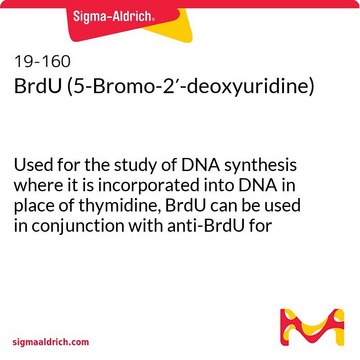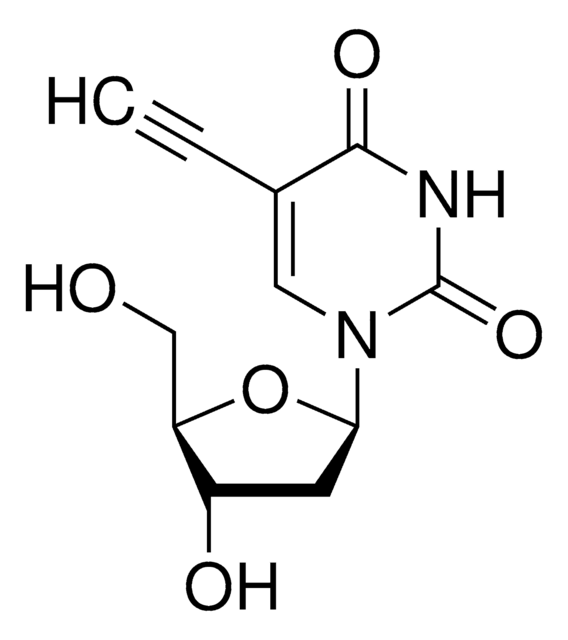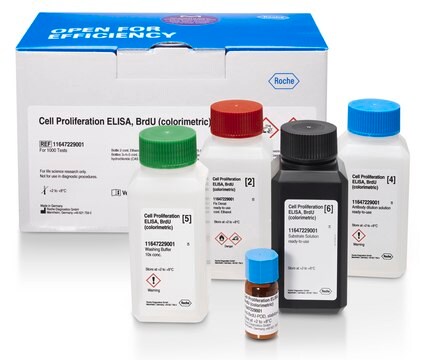203806
5-Bromo-2′-deoxyuridine
Thymidine analog. Useful for the study of DNA synthesis where it is incorporated into DNA in place of thymidine.
Synonym(e):
5-Bromo-2′-deoxyuridine, 5-BrdU
About This Item
Empfohlene Produkte
Qualitätsniveau
Assay
≥98% (HPLC)
Form
solid
Hersteller/Markenname
Calbiochem®
Lagerbedingungen
OK to freeze
Farbe
white
Löslichkeit
water: 10 mg/mL
0.1 M NaOH: 50 mg/mL
DMSO: 50 mg/mL
Versandbedingung
ambient
Lagertemp.
15-25°C
InChI
1S/C9H11BrN2O5/c10-4-2-12(9(16)11-8(4)15)7-1-5(14)6(3-13)17-7/h2,5-7,13-14H,1,3H2,(H,11,15,16)
InChIKey
WOVKYSAHUYNSMH-UHFFFAOYSA-N
Allgemeine Beschreibung
Warnhinweis
Rekonstituierung
Sonstige Hinweise
Cattoretti, G., et al. 1993. J. Pathol. 171, 83.
Fukuda, K., et al. 1990. Anal. Quant. Cytol. Histol. 12, 135.
Rechtliche Hinweise
Signalwort
Danger
H-Sätze
Gefahreneinstufungen
Muta. 1B - Repr. 2
Lagerklassenschlüssel
6.1C - Combustible acute toxic Cat.3 / toxic compounds or compounds which causing chronic effects
WGK
WGK 2
Analysenzertifikate (COA)
Suchen Sie nach Analysenzertifikate (COA), indem Sie die Lot-/Chargennummer des Produkts eingeben. Lot- und Chargennummern sind auf dem Produktetikett hinter den Wörtern ‘Lot’ oder ‘Batch’ (Lot oder Charge) zu finden.
Besitzen Sie dieses Produkt bereits?
In der Dokumentenbibliothek finden Sie die Dokumentation zu den Produkten, die Sie kürzlich erworben haben.
Unser Team von Wissenschaftlern verfügt über Erfahrung in allen Forschungsbereichen einschließlich Life Science, Materialwissenschaften, chemischer Synthese, Chromatographie, Analytik und vielen mehr..
Setzen Sie sich mit dem technischen Dienst in Verbindung.







